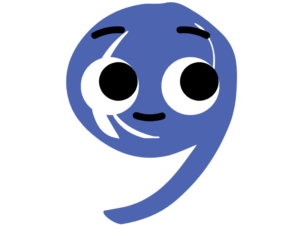Apostrophes tend to divide folk – some get them, some don’t; some champion them, others want to do away with them. Whatever your view, they are part of our language. And if your intention is to write things that others will read, it’s best to get to grips with apostrophes in order to make your writing clear – and avoid a potential backlash.
When I saw this headline on the back page of a newspaper (I won’t name the publication – mistakes happen)
‘BIG SAM’S AND PEP’S BROMANCE’
my immediate thought was not about the story, but about the messages about punctuation that might be heading the way of the editorial team. How should that headline, suggesting something shared, have been punctuated?
Apostrophes – a reminder of the basics
Apostrophes are used to show two things:
-
- Contraction: where two words have been smushed together, the apostrophe takes the place of the omitted letter or letters:
It is ➜ It’s
-
- Possession: where one noun belongs to or is related to another, the apostrophe shows that relationship:
The whiskers of the cat ➜ The cat‘s whiskers
If the noun is singular and ends in an s, then it is still followed by ’s in order to make it clear that the noun is singular:
The sister of James ➜ James’s sister
There is one exception to the use of the possessive apostrophe: if the pronoun it has possession of something, then following the usual rules would produce the same result as for a contraction; to make the meaning clear, therefore, the apostrophe is omitted:
The head belonging to it ➜ Its head
Apostrophes and plurals
This is where most apostrophe-related problems seem to occur, but the main things to remember are:
-
- Never use an apostrophe to show that something is plural:
More than one pie ➜ pies, not pie’s
-
- Although you must not use apostrophes to show that something is plural, you still need to use them to show where a plural noun has possession of or a relationship to another. Where the plural ends in an s, it is necessary to include just the apostrophe to make it clear that the noun is plural:
The books of more than one author ➜ The authors’ books
The books of more than one child ➜ The children’s books
Shared possession
Here’s where it seems to have tripped up the headline writer. Where more than one person has a thing they share as a unit, the possessive apostrophe goes after the last name making up that unit:
Richard Burton and Elizabeth Taylor married each other twice, so we would refer to those as Richard Burton and Elizabeth Taylor‘s marriages.
Collective possession
On the other hand, where more than one person has their own collection of the same thing, the possessive apostrophe goes after each of the names:
Richard Burton and Joan Collins were each married several times, but none of those marriages were to each other. We would therefore refer to Richard Burton’s and Joan Collins‘s marriages.
Conclusion
I don’t profess to know anything about Big Sam or Pep except that they have something to do with football. I do know, however, that a bromance is something that is shared; associating their names with that emotion suggests they share it. Therefore, the headline should have been written like this:
BIG SAM AND PEP’S BROMANCE
Apostrophes have a habit of creeping in or being left out however well we understand them. If you have a story to tell, then I would say that you should get on with that and check the punctuation later or let someone do that for you. A professional editor or proofreader will not judge you for mistakes – as I said earlier, these things happen. If you would like me to help you to present the best version of your writing, please get in touch here.
Hypertext links to other websites are for the convenience of users only and do not constitute any endorsement or authorisation by me.



